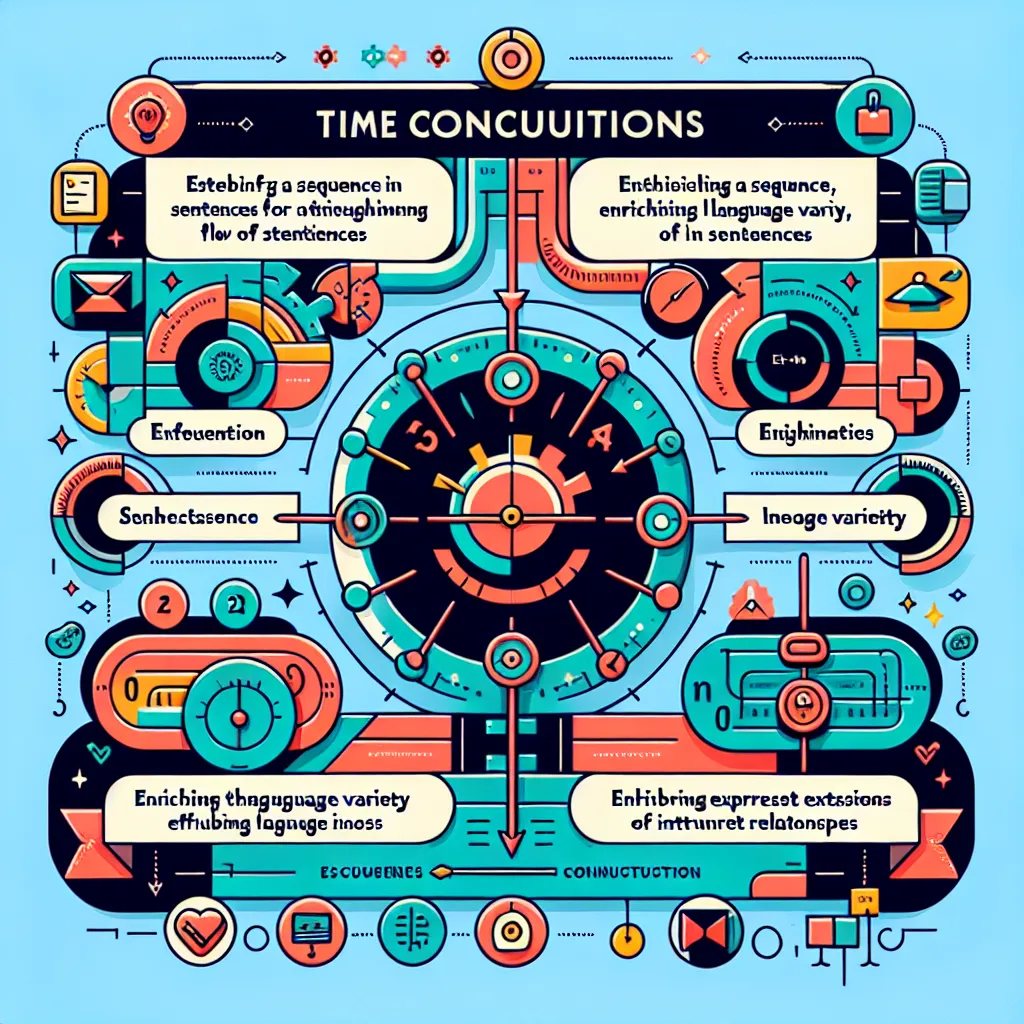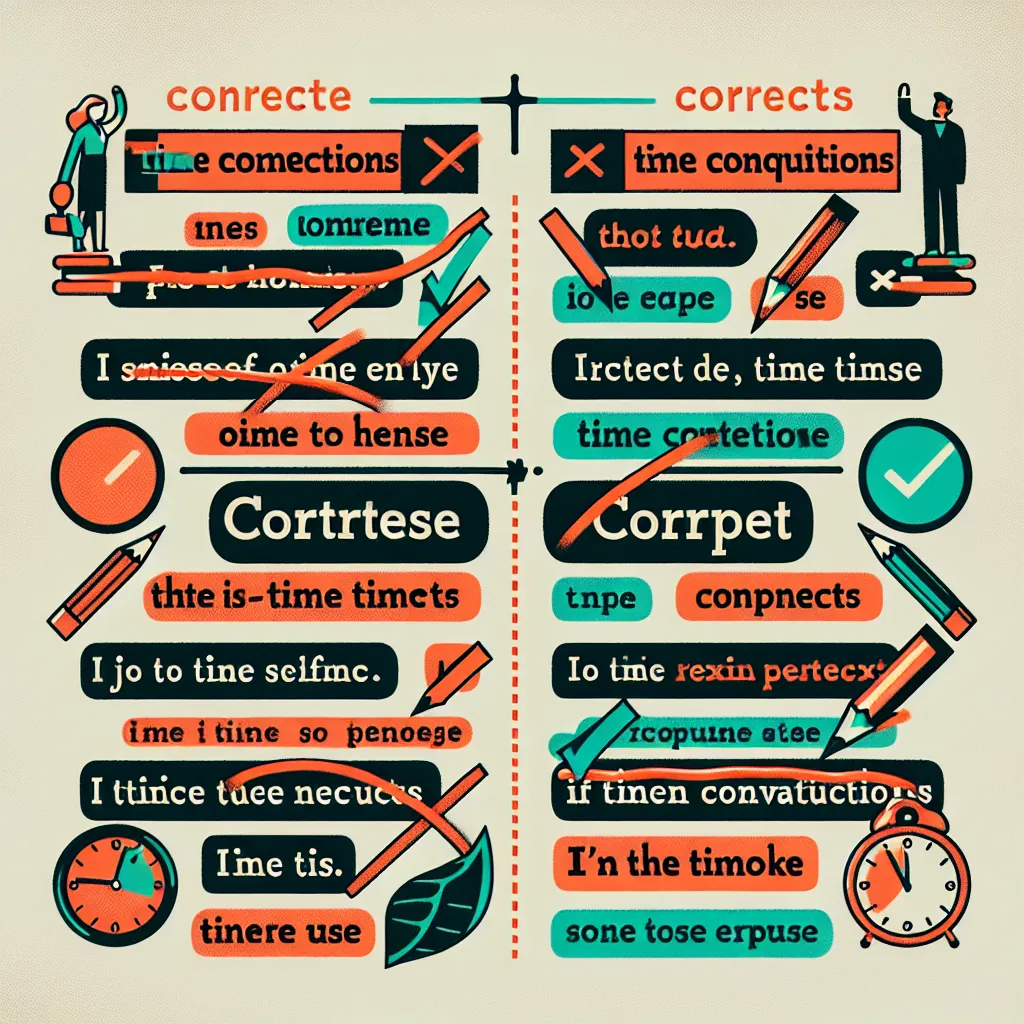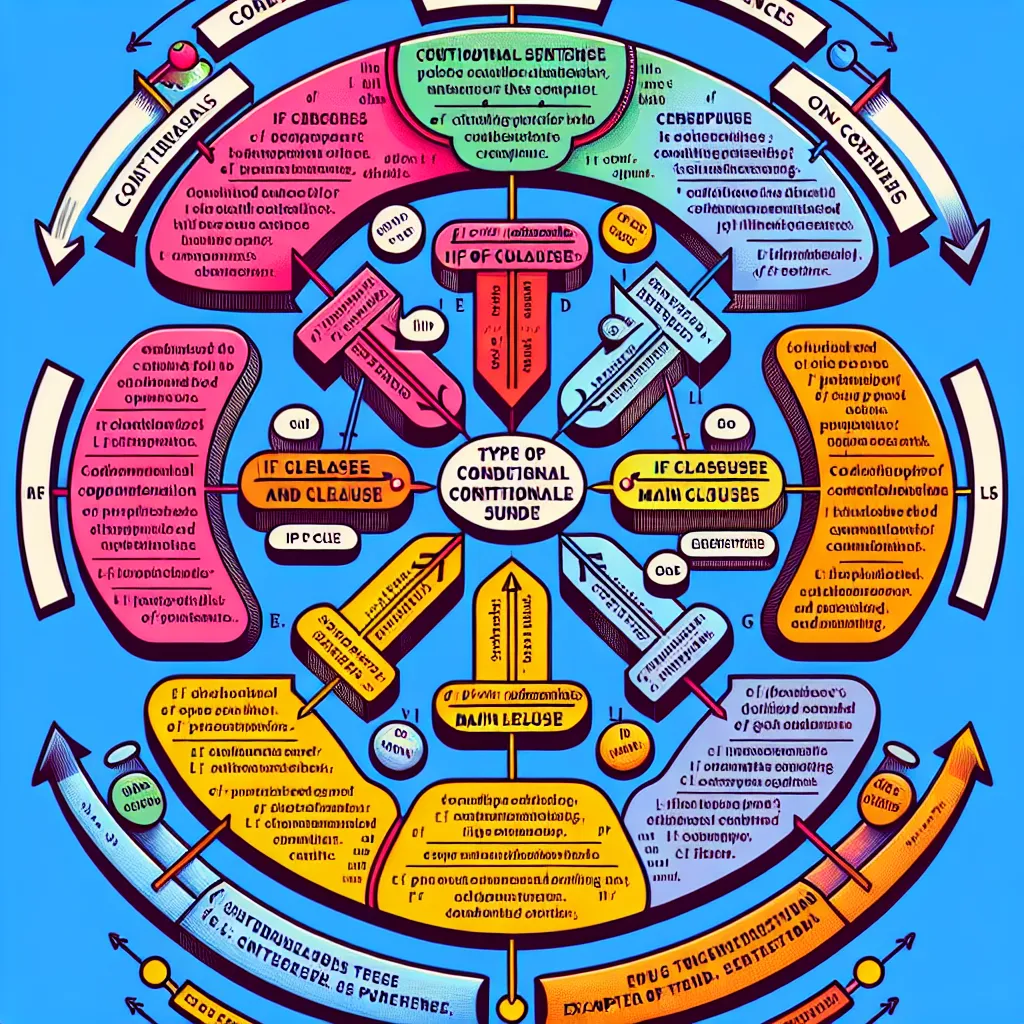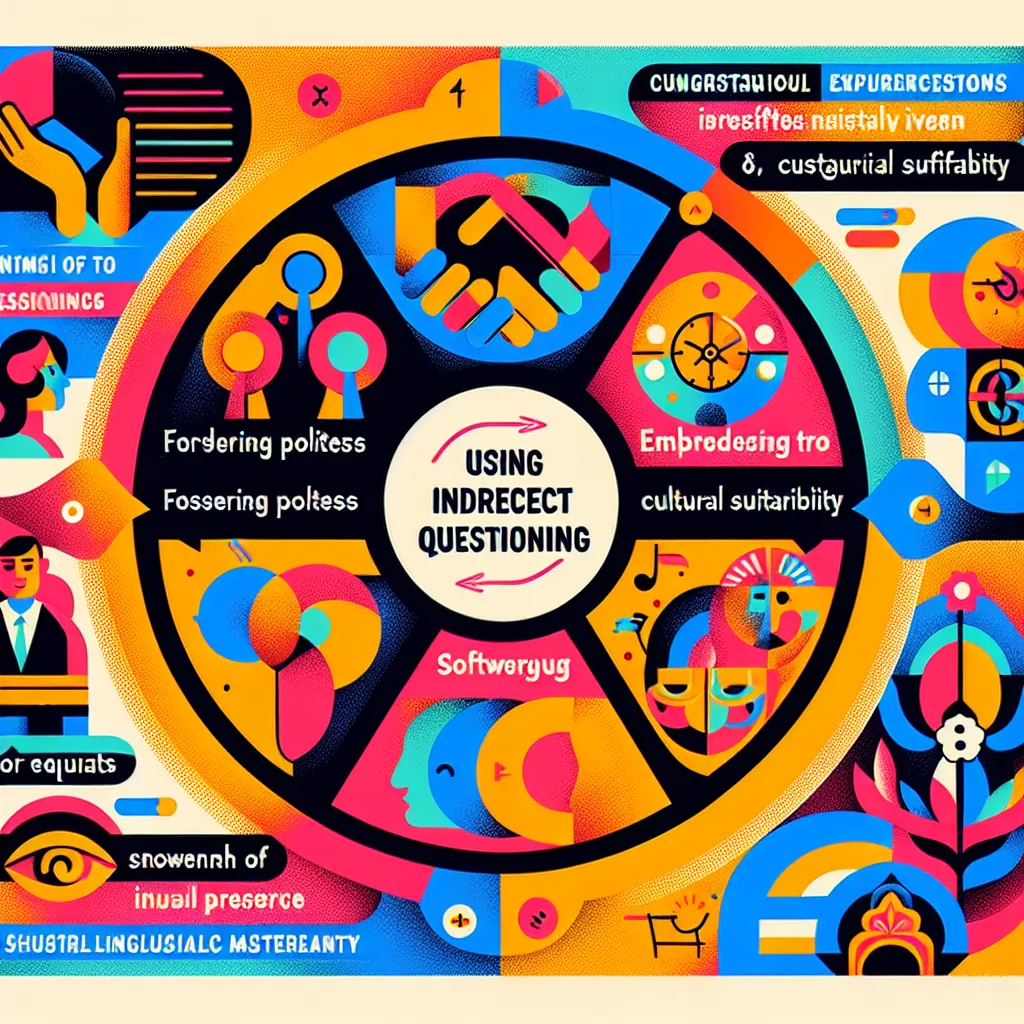Are you struggling with using time conjunctions in English? Don’t worry; you’re not alone. Many English learners find it challenging to use these important connectors effectively. In this guide, we’ll explore how to master the use of conjunctions of time, providing you with clear explanations, practical examples, and useful tips to enhance your English grammar skills.
Understanding Conjunctions of Time
Conjunctions of time are words or phrases that connect different parts of a sentence to show when something happens in relation to another event. They play a crucial role in creating clear and coherent narratives, making your writing and speech more sophisticated and precise.
Why Are Time Conjunctions Important?
Time conjunctions are essential for several reasons:
- They help establish a clear sequence of events.
- They add variety to your sentence structures.
- They improve the overall flow and coherence of your writing or speech.
- They allow you to express complex temporal relationships more accurately.
 Importance of Time Conjunctions
Importance of Time Conjunctions
Common Conjunctions of Time
Before we dive into mastering their use, let’s review some of the most common conjunctions of time:
- When
- While
- As
- Before
- After
- Since
- Until
- As soon as
- Once
- By the time
How to Use Time Conjunctions Effectively
To master the use of conjunctions of time, follow these steps:
-
Understand the meaning: Each conjunction has a specific meaning and use. For example, “when” is used for simultaneous actions or a specific point in time, while “before” indicates that one action precedes another.
-
Practice with simple sentences: Start by using time conjunctions in basic sentences to get comfortable with their structure.
Example: “I will call you when I arrive home.”
-
Expand to complex sentences: Once you’re confident with simple sentences, try creating more complex ones using multiple clauses.
Example: “After I finish work, I’ll go to the gym, and then I’ll meet you for dinner.”
-
Pay attention to tense consistency: Ensure that the tenses in your sentences align with the time relationships you’re expressing.
Example: “By the time you arrive, I will have finished cooking dinner.”
-
Use a variety of conjunctions: Don’t rely on just one or two time conjunctions. Incorporate a range to make your language more diverse and precise.
Common Mistakes and How to Avoid Them
When using conjunctions of time, be aware of these common pitfalls:
-
Misusing “when” and “while”: Remember, “when” is typically used for a specific moment or short action, while “while” is used for ongoing actions.
Incorrect: “When I was sleeping, the phone rang.”
Correct: “While I was sleeping, the phone rang.” -
Forgetting to use a comma: In many cases, you need a comma when the time clause comes before the main clause.
Incorrect: “Before I go to bed I always brush my teeth.”
Correct: “Before I go to bed, I always brush my teeth.” -
Using the wrong tense: Make sure your tenses align with the time relationship you’re expressing.
Incorrect: “After I will finish work, I’ll go home.”
Correct: “After I finish work, I’ll go home.” -
Overusing certain conjunctions: Vary your use of time conjunctions to make your writing more engaging and sophisticated.
 Common Mistakes with Time Conjunctions
Common Mistakes with Time Conjunctions
Practical Exercises to Improve Your Skills
To truly master the use of conjunctions of time, practice is key. Here are some exercises you can try:
-
Gap-fill exercises: Find or create sentences with blanks where time conjunctions should be, and fill them in appropriately.
-
Sentence combining: Take two simple sentences and combine them using a suitable time conjunction.
-
Story creation: Write a short story or describe your daily routine using as many different time conjunctions as possible.
-
Sentence transformation: Rewrite sentences using different time conjunctions while maintaining the same meaning.
-
Error correction: Identify and correct mistakes in sentences that use time conjunctions incorrectly.
Advanced Tips for Mastering Time Conjunctions
Once you’ve got the basics down, consider these advanced strategies:
-
Study authentic materials: Read English books, articles, and listen to native speakers to see how time conjunctions are used naturally.
-
Keep a conjunction journal: Note down interesting uses of time conjunctions you come across and try to use them in your own sentences.
-
Practice with a language exchange partner: Engage in conversations where you deliberately use various time conjunctions and ask for feedback.
-
Explore nuanced differences: For example, understand the subtle differences between “since,” “for,” and “from” when talking about duration.
-
Use online resources: Utilize websites like Learn English for additional exercises and explanations.
Conclusion
Mastering the use of conjunctions of time is a crucial step in enhancing your English language skills. By understanding their meanings, practicing regularly, and being aware of common mistakes, you can significantly improve your ability to express temporal relationships in English. Remember, like any aspect of language learning, it takes time and practice to become proficient. Keep at it, and you’ll soon find yourself using time conjunctions with confidence and precision.
For more tips on improving your English grammar, check out our guide on strategies for mastering English grammar in exams. Happy learning!




